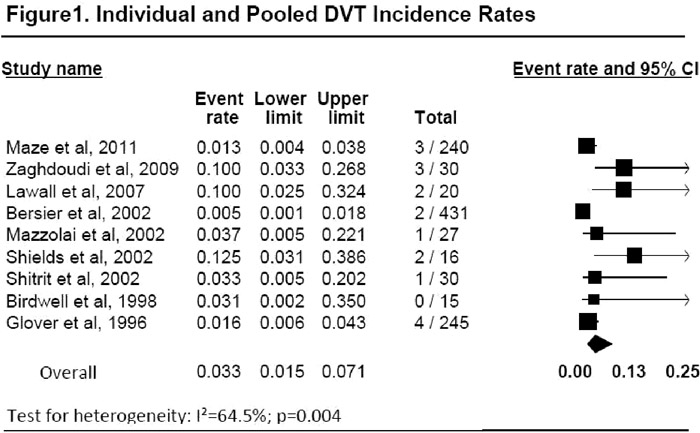Background:
Cellulitis and erysipelas are common types of skin and soft‐tissue infection, resulting in more than 600,000 hospitalizations per year. Because both infections often present with unilateral lower‐extremity pain, redness, and swelling, deep vein thrombosis (DVT) is often considered a part of the differential diagnosis and compression ultrasound (CUS) is often ordered to assess its occurrence. Different authors, however, have found different rates of DVT in these patients and have reached contradictory conclusions about the need for CUS. The objective of this study was to determine the prevalence of DVT in patients with cellulitis and erysipelas and to inform about the utility of CUS for these patients.
Methods:
The Preferred Reporting Items for Systematic reviews and Meta‐Analyses (PRISMA) statement for conducting and reporting systematic reviews was used for our meta‐analysis. OVID was used to search Medline using the subject headings “cellulitis,” “erysipelas,” “soft tissue infections,” “venous thrombosis,” “thrombophlebitis,” and “lower extremity.” References were limited to the English language and humans. A standardized data extraction form was used to document patient characteristics such as age, type of soft‐tissue infection, clinical setting, type of diagnostic test for DVT, and the specific definition of DVT used. Study quality assessment was based on the Newcastle‐–Ottawa Quality Assessment Scale for Cohort Studies. The event rate for DVT was estimated, and the corresponding 95% confidence interval from each study was calculated using the exact binomial method. The incidence rates from the individual studies were pooled using inverse variance weighting and the random‐effects model to calculate and overall DVT rate and graphed as a forest plot.
Results:
Nine studies were found, resulting in a total of 1054 patients with cellulitis or erysipelas with 18 DVTs. The pooled incidence rate was 3.3% (95% CI, 1.5%–7.1%) for any DVT and 2.1% (95% CI, 0.5%–9.1%) for proximal DVT.
Conclusions:
The risk of DVT in cellulitis and erysipelas is low compared with the average risk of patients referred for CUS and comparable to low‐risk patients, as determined by clinical prediction rules such as the Wells criteria

